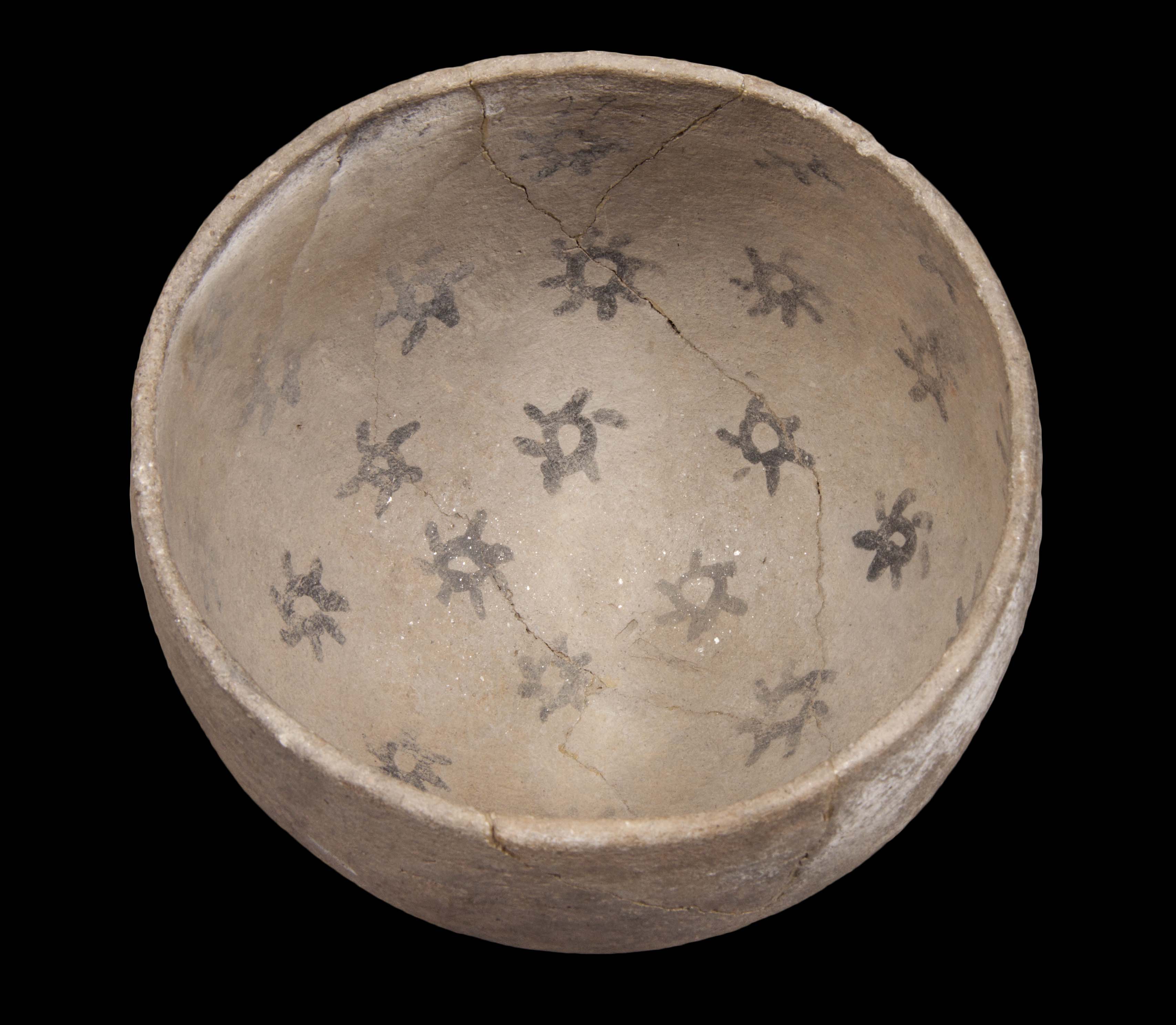Prescott Black-on-gray is the decorated type of Prescott Gray Ware. This type is typically found between the Verde and Big Sandy rivers, but a colony in which Prescott Black-on-gray pottery was used was also discovered at Nalakihu in Wupatki National Monument.
Archaeological Culture: Prescott
Date Range: At least A.D. 800, and possibly earlier, to 1400.
Construction: By paddle and anvil.
Firing: Firing atmosphere apparently more controlled for reduction and consistently gray colors than for plain Prescott Gray.
Temper: Angular quartz sand and feldspar with conspicuous amounts of mica in the core and on the surface.
Surface Finish: Slightly rough to well-smoothed, not polished.
Surface Color: Very variable; vessel interiors a dark gray; exteriors may be gray, brown, or orange.
Forms: Bowls and large jars.
Vessel Thickness: 5.1 mm to 8 mm; average about 6.5 mm (bowls); 8.9 to 10.6 mm; average about 10 mm (jars).
Decoration:
- Paint: Black, dull, sometimes thick, sometimes thin.
- Pigments: Organic.
- Design: Wide black lines or stripes, sometimes a definite layout, composed of nests of triangles and other motifs, usually crudely executed with unintentional splashes of paint. Black designs on inside of bowls and on the inside necks of large jars.
Similar ware(s): Aquarius Black-on-orange and Deadmans Black-on-gray. See the 2001 Northern Arizona University Ceramic Manual (link opens in new window) for comparisons.
Compiled from the following sources:
Colton, Harold. (1958) Pottery Types of the Southwest. Museum of Northern Arizona Ceramic Series No. 3D. Flagstaff, Arizona.
Compiled by:
April Peters, Northern Arizona University Anthropology Laboratories.

